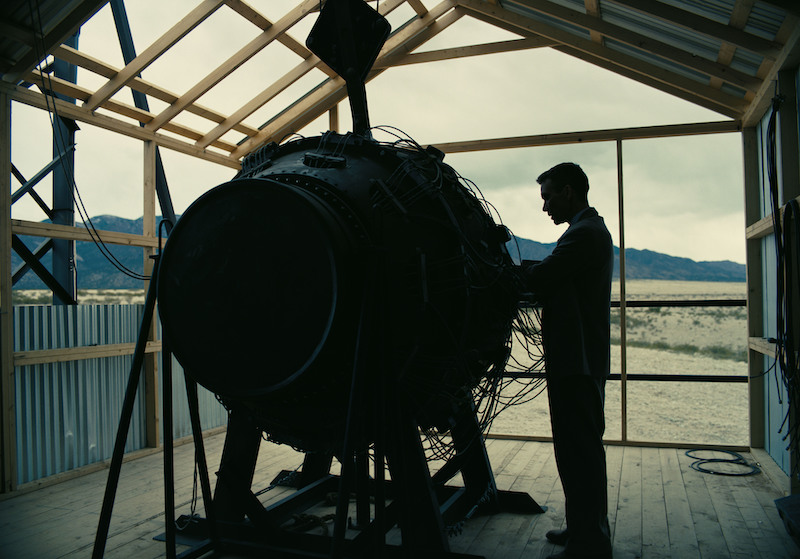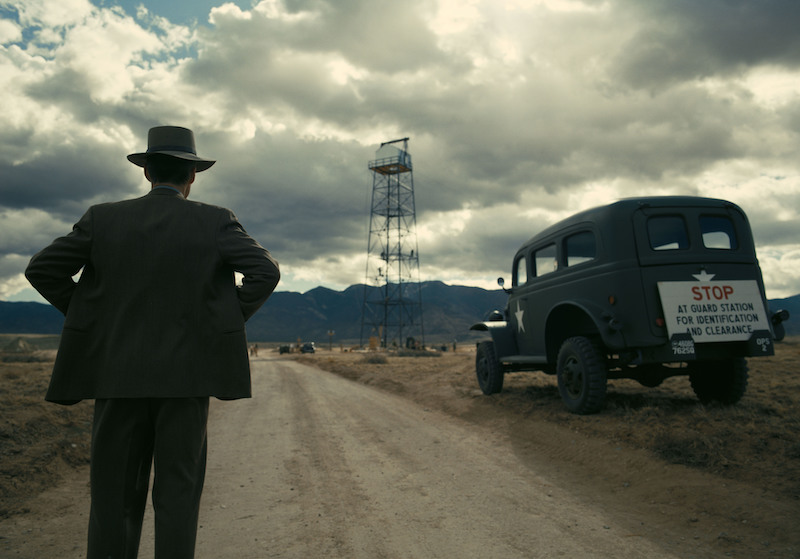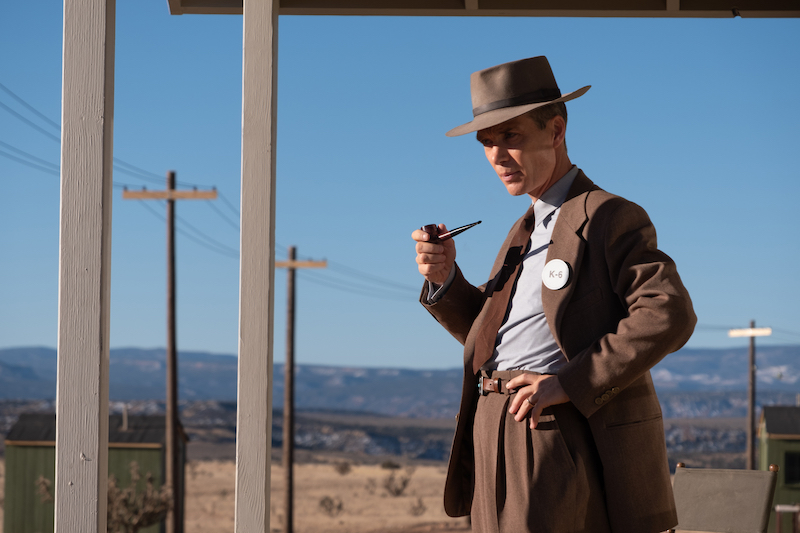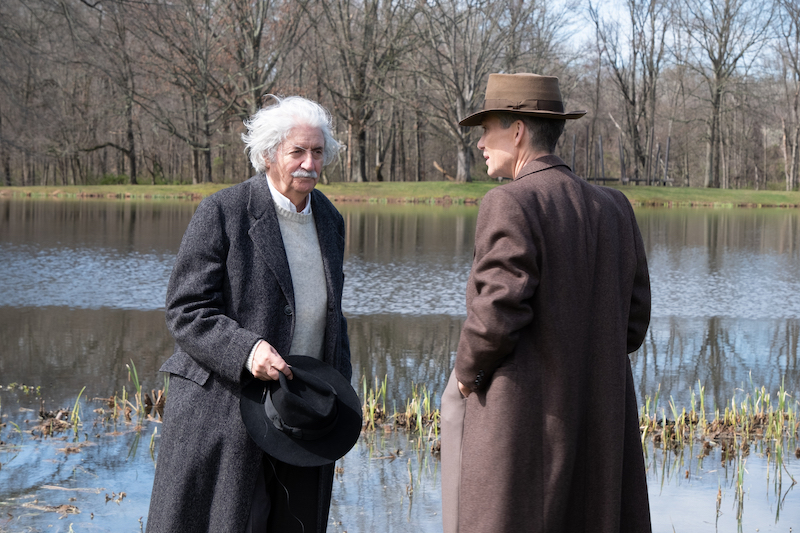Movie review: Oppenheimer
Has Christopher Nolan created a quantum masterpiece..?
It certainly feels like a masterpiece. Every shot, each line of dialogue, all the seemingly inconsequential interactions, disparate conflicting elements, the score, and the philosophical toiling that explodes on the screen in a skin-melting cinematic mushroom cloud might have come together in a 57 day shoot (according to an article in The Washington Post) but their individual atomic signatures suggest a journey that spans an entire career.
Oppenheimer hasn’t phased into view from some arbitrarily distant point of the observable universe. There are cosmic strings in this movie that have been weaved and pulled right through Christopher Nolan’s collective cinematography. His dabbling with the nature of the quantum universe and the transience of time and space (Tennet, Interstellar, Inception); historical event chronicling (Dunkirk); and complicated character autopsies (Memento, The Dark Knight trilogy). The tools of his story-building, of the visual (his commitment to dodging CGI meant he had to recreate the famous ‘Trinity Test’ with a mountain of very real explosives), audio, and narrative structures – the methods behind his craft have all been enriched through a dogged commitment to experimentation too.

And it all feels rather manifest when it’s a study that orbits a man whose contributions to the human story are of singularly explosive importance. Robert Oppenheimer (played here by Cillian Murphy), the man that harnessed the power of the sun. The man who created a weapon that had the power to undo all we’ve achieved and all that we might ever achieve. Fluent in theoretical physics and the Bhagavad Gita. A man whose head grew heavy under a crown of unbearable atomic weight. Maybe it’s all unconnected, or maybe just maybe it’s all a preordained chain reaction.
I am become death, destroyer of Worlds
I promise not to give away any spoilers that might affect your enjoyment of the movie. But as it’s a screenplay that dramatises well-documented real world events, I feel there’s a bit of license to discuss certain instrumental plot points. So, disclaimer, this is going to involve a bit of history and just the lightest sprinkling of physics. Text books open. Turn to page two.

For the most part, Oppenheimer is the synopsis to the story of the Manhattan Project. An American endeavor, operationally spear-headed by Robert Oppenheimer, to theoretically conceive and engineer an atomic bomb. The fallout from a laboratory experiment conducted by Otto Hahn, Lise Meitner and Fritz Strassmann which proved you could smash atoms apart by firing neutrons at them (fission), releasing a Kanye quantity of chaotic energy.
‘Yeah, but can we kill people with it?’ Is the human default for almost any scientific discovery, and so it was with fission. The problem was that the escape of this nuclear genie occurred during the start of World War II. Meaning that weaponising the science, and the resultant military supremacy that would create, was a race that neither side of the trenches wanted to be a runner-up in.

Oppenheimer was chosen as the man to lead team America (appointed by king-maker General Leslie Groves (Matt Damon)) because he was a brilliant theoretical physicist, uniquely versed in the secret quantum life of sub-atomic particles. He was charismatic too, a self-aggrandising, martini fetishist and womaniser who was marginally compromised (and therefore leverageable) because of his refusal to condemn the grassroots of communist action sprouting in the USA at the time.
Even a basic knowledge of world history will spoil the answer as to whether he was successful or not. But the art in the film doesn’t come from a twist ending.
It’s not in the science either. American physicist, Richard Feynman allegedly once said: “If you think you understand quantum mechanics, you don’t understand quantum mechanics.” And fortunately, although that study is at the glowing core of what this movie is you don’t really have to understand much of it to fully appreciate the cinematic experience.
Particularly, a wave
Beyond the craft and script that Nolan uses to gild the story’s frame, it’s Cillian Murphy’s portrayal that loads Oppenheimer into the large hadron collider of all-time greats. His dance from conflicted genius, to project manager and politician, to repentant atomic father consumed by the shockwave of his creation is not just Oscar-worthy, it’s iconic.

He’s supported by a merry band of rock star physicists. A Coachella line-up of Nobel-men curated on the basis of IQ, social awkwardness and the likelihood of spontaneous nosebleeds. We get to see all the big names of the quantum golden age – Albert Einstein (played by Tom Conti); Edward ‘father of the H Bomb’ Teller (played by Benny Safdie); Niels Bohr (Kenneth Branagh); Ernest Lawrence (Josh Hartnett); Richard Feynman (Jack Quaid); Enrico Fermi (Danny Deferrari); and there’s more but there’s only so much scientific ‘E’ an audience can ‘MC2‘.

Other cast members include Emily Blunt who achieves the almost impossible act of scene theft as Kitty Oppenheimer, Robert’s long suffering and undervalued wife; Florence Pugh as the Red mistress; Robert Downey Jr. as the brilliantly multi-dimensional agitator, Lewis Strauss. It truly is a character draft of monumental proportions.
But as the neutron smithereens fall, and the credits roll, we’re left with in the same sobering ennui as Oppenheimer himself. Man has the power to end man. And it often finds itself with the motive and the opportunity.
The only quantum of solace one might take is that in the nearly 80 years since the fruit of the Manhattan Project was sent spiralling into two Japanese cities, not a single atomic or hydrogen bomb has been dropped since.
Verdict: Arguably Nolan’s finest work yet. A masterpiece of world-shaking proportions.
Oppenheimer is available to watch in cinemas across the UAE now. Book your tickets: here
Images: MovieStillsDB
